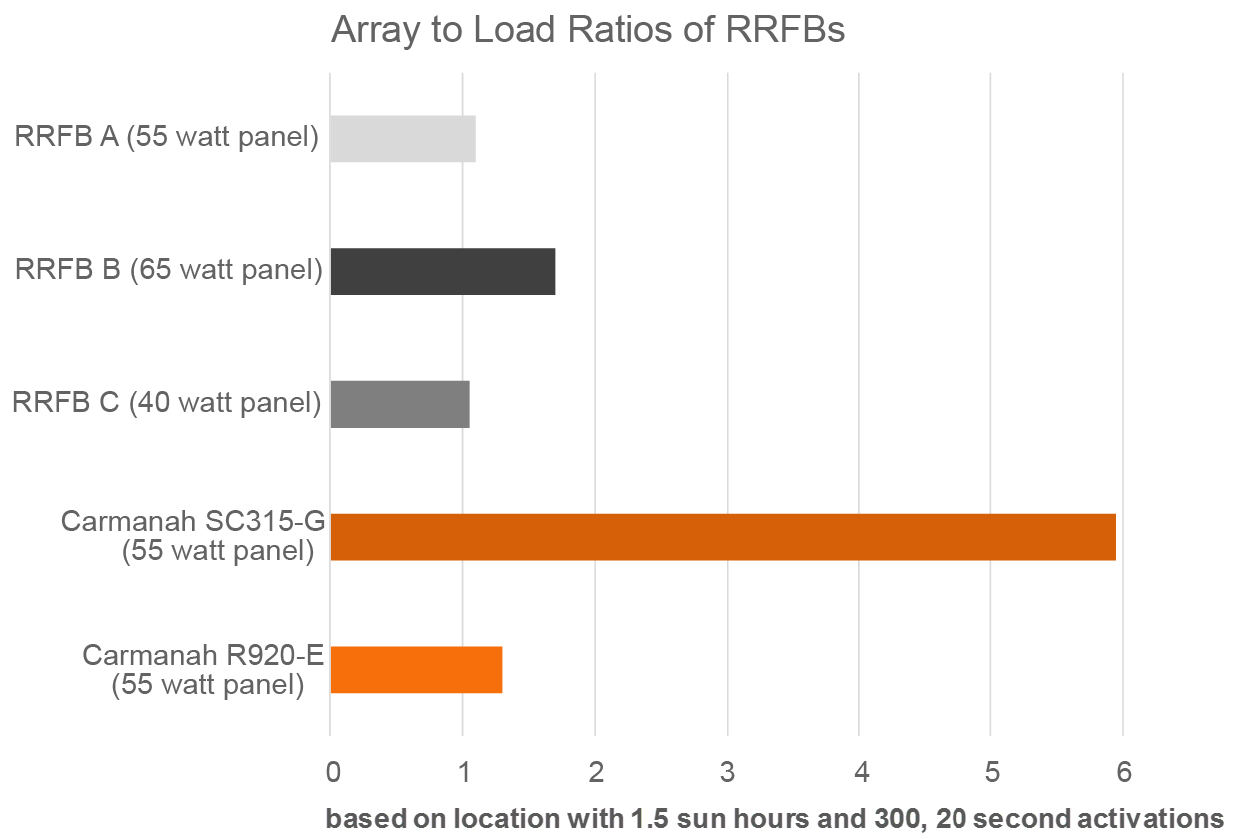FINDING THE RATIO OF ENERGY IN AND ENERGY OUT
ARTICLE 2 of 4 | This is the second article in a series of four on understanding solar power. Click here to start from the beginning.
When specifying solar-powered beacons for a project, it is important to know what energy-in and energy-out elements to consider for energy balancing. The next step is to compare the two to determine the most effective energy balance for your project. This is done through the array-to-load ratio (ALR). Let’s use rectangular rapid flashing beacons (RRFBs) as an example since they have the most variables to consider.
OVERVIEW: Learn how solar beacons work.
What is ALR?
ALR compares the energy collected through the system to the total system load by dividing energy in by energy-out. This ratio is usually calculated using insolation values of a location for the worst month of the year, based on NASA Surface Meteorology and solar energy tables.
A calculated array-to-load ratio must be greater than 1:1 in order for the system to have enough power to function. However, for a system to operate reliably, the industry-accepted ratio should be at least 1.2:1. If a system does not have an ALR of at least 1.2:1, the system will not operate reliably. This is an important concept for two reasons. First, the recommended ratio provides a buffer to account for variability in both the available solar energy and the system usage. It also enables the battery life to be maximized by providing necessary energy for the batteries to return to a full state-of-charge at the end of each day. A system’s array-to-load ratio has a direct impact on battery life.
In chart A below, several array-to-load ratios of different RRFB products are shown, along with the solar panel sizes (wattage) of those products. This chart illustrates the insignificance of panel wattage when ALR is considered. As seen in the chart, some RRFBs with smaller panels meet the recommended ratio, while some systems with larger panels fall below the recommended ratio. For some systems with larger panels, the combined load of activations and losses through inefficiencies can actually produce an ALR lower than the industry minimum (based on a comparable usage model).

Other factors, such as shading at the location, decrease the available energy in and greatly reduce the ALR. Additionally, options such as push buttons with voice message and locate tones have significant energy draws on a system. Instead of using panel size, using the recommended ALR when specifying RRFBs and other solar-powered beacons ensures there is a sufficient energy budget for optimal system performance. We can provide assistance in determining your site-specific array-to-load ratio.
Array-to-load ratios vary considerably between manufacturers, affecting battery life and overall system autonomy. NEXT ARTICLE: Learn how ALR and battery life affect system autonomy.